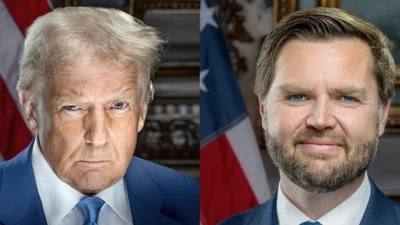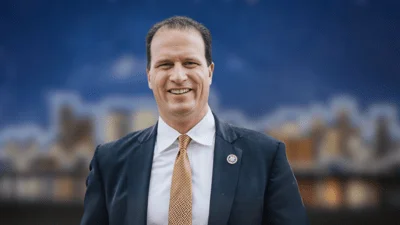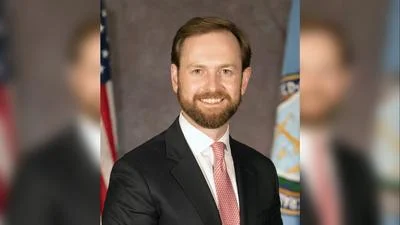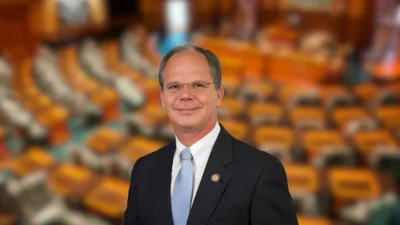The Congressional Record is a unique source of public documentation. It started in 1873, documenting nearly all the major and minor policies being discussed and debated.
“STREAMLINED TRANSPORTATION EFFICIENCY PROGRAM FOR THE 21ST CENTURY (STEP 21)” mentioning the U.S. Dept. of Transportation was published in the House of Representatives section on pages H2652 on May 14, 1997.
The publication is reproduced in full below:
STREAMLINED TRANSPORTATION EFFICIENCY PROGRAM FOR THE 21ST CENTURY
(STEP 21)
The SPEAKER pro tempore. Under a previous order of the House, the gentleman from Florida [Mr. Boyd] is recognized for 5 minutes.
Mr. BOYD. Mr. Speaker, I also rise and want to thank the gentleman from California [Mr. Condit] and the gentleman from Texas [Mr. DeLay] for giving us the opportunity to address this issue of transportation funds.
Twenty-five States have received less than they put into the highway trust fund, and 17 States have gotten back less than 90 cents on the dollar. When that happens, the Federal highway program is clearly broken.
Personally, I am also cosponsoring a piece of legislation called the Transportation Empowerment Act that would return most of the highway program dollars to the States. However, because of our makeup here in Congress and particularly in the Senate, that is a piece of legislation which probably will not move as STEP 21 will. So I am also supporting STEP 21. I think that is the logical mainstream proposal that can fix the existing problems in the current law while still maintaining an appropriate Federal role in highways.
It is intriguing to me that as we stand here, 3 years from the 21st century, that we are dealing with proposals in our Federal highway funding program that uses formulas that date back to 1916. These two particular formula factors that we are talking about, lands area and postal route mileage, come from a time when the national highway system did not exist, for obvious reasons; there were not any cars. In fact, the national highway system did not come into effect until 1956.
Mr. Speaker, I believe that these two factors, land area and postal route mileage, may have made some sense in a time when we were trying to get our horse and buggy out of the mud, but today they have little value at a time when we are trying to get our cars out of traffic. I would just like to remind my colleagues that what we are dealing with here is a gas tax, not a hay tax for horses.
I applaud the fact that the administration has stepped up to the plate and released their own plan for the reauthorization of ISTEA, which is called NEXTEA, but I want to remind you that this proposal is a giant step in the wrong direction.
The proposal maintains a State guarantee payback from the highway trust fund is at 90 cents, 90 percent, 90 cents on the dollar. However, I would like to remind my colleagues that over the last 5 or 6 years, even though we were guaranteed 90 cents return in ISTEA, Florida has averaged 77 cents on the dollar in gas taxes cents to Washington that would come back to Florida to help us with our roads. That is unacceptable.
According to the U.S. Department of Transportation's own calculations, the funding allocation under ISTEA for the State of Florida during the fiscal years 1991 through 1997 was approximately 4.28 percent. Under the NEXTEA proposal, those numbers will move to 4.08 percent. Certainly, that is less money. I am in the situation, Florida is in the situation with many other States in that we will be getting a much smaller slice of a larger pie, and that is not acceptable.
Proponents of NEXTEA have been arguing that 49 States also receive more dollars. But as I said earlier, that is simply because we have more dollars in the pot to carve up and we, in fact, will be getting a smaller slice. As a long-time donor State, Florida has consistently worked to provide greater funding equity in the Federal highway program. This legislation, STEP 21, is a clear step in the right direction, while also giving States more flexibility over how best to meet their individual transportation needs.
STEP 21 is a streamlined, commonsense approach to the current Federal program. It replaces a 40-year-old program, a program which was put in place to build an interstate highway system, and it replaces a system with a more decentralized approach that will allow the States to the respond to changing statewide needs with adequate resources.
STEP 21 streamlines the program's structure, increases State flexibility and provides financial equity. STEP 21 will guarantee a return of at least 95 cents on the dollar back to the States. It does that through allocating 40 percent into a Federal highway pot, and then it takes 60 percent and returns it to the States through a new streamlined surface transportation program.
Many opponents argue that it will derail such programs as congestion mitigation and air quality programs and also transportation enhancement programs, such as bicycle trails and pedestrian trails. That simply is not true. There is nothing in this piece of legislation that prohibits those programs from going on.
I would like to remind my colleagues that the CMAQ, that is congestion, mitigation, and air quality program, is governed by the Clean Air Act, and actually it is the Clean Air Act and not the Transportation Act that governs that.
Mr. Speaker, I would like to remind our colleagues that if we truly believe that we ought to have a government that is closer to the people, that the dollars ought to stay back in our States where they can best be used by local folks.
____________________








